 |
 |
 |
| |
3 YEARS OF ADEFOVIR AND LAMIVUDINE COMBINATION THERAPY MINIMIZES THE RISK OF GENOTYPIC RESISTANCE TO ADV IN LAM RESISTANT PATIENTS
|
| |
| |
Reported by Jules Levin
EASL, April, 2007
Barcelona, Spain
P. Lampertico, M. Vigaṇ, E. Manenti, M. Iavarone, G. Lunghi, E. Del Ninno, M. Colombo
Division of Gastroenterology
Fondazione Policlinico, University of Milan, Italy
145 lamivudine resistant patients with chronic HBV (84% HbeAg-negative, 73% cirrhotic) were treated for more than 1 year (median 30 months, range 12-65) with 10 mg/daily of adefovir added to ongoing lamivudine. HBV DNA was assessed every 2 months by Versant 3.0 and drug resistance was assessed by INNO-LiPA HDR V2 assay in viremic patients every year.
AUTHOR CONCLUSION
ADV-LAM combination is an effective and safe treatment strategy in lamivudine-resistant patients for at least 3 years since it minimizes the risk of genotypic resistance to adefovir and prevents both virological rebound and clinical resistance up to 3 years.
AUTHOR SUMMARY
Most patients achieved a virological and biochemical response (80% and 84%). None developed a virological or clinical breakthrough, whatever the degree of viral suppression.
A few patients (4%) circulated ADV-resistant strains at baseline (rtA181V/T), not influencing antiviral response rates.
No patient developed genotypic resistance for rtA181V and rtN236T. 3 patients (2% over 40 months) developed the rtA181T mutation as a mixed viral population with rtA181A, while responding to therapy.
24% patients seroconverted to anti-HBe; HBsAg seroconversion was a rare event (<1%).
Combination therapy prevented clinical decompensation in all cirrhotic patients, but not the development of HCC (12%).
A few patients (7%) had a > 0.5 mg/dl increase of serum creatinine.
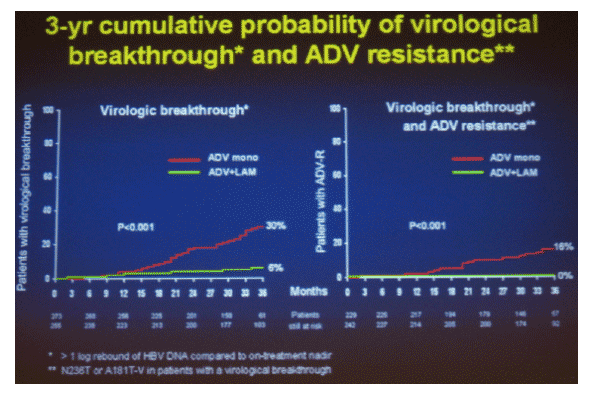
Lampertico says present strategy should be: early combination therapy: rescue of suboptimal responders at week 24-48 with "add on". Rescue at virologic breakthrough with "add on" (drug without cross-resistance). When ADV is added to LAM in LAM-R patients viral response is greatest when HBV DNA is lowest (100% response when 3-6 log HBV DNA; about 80% when 6-8 log; when >8 log about 40%) (Hepatology 2005, Lampertico).
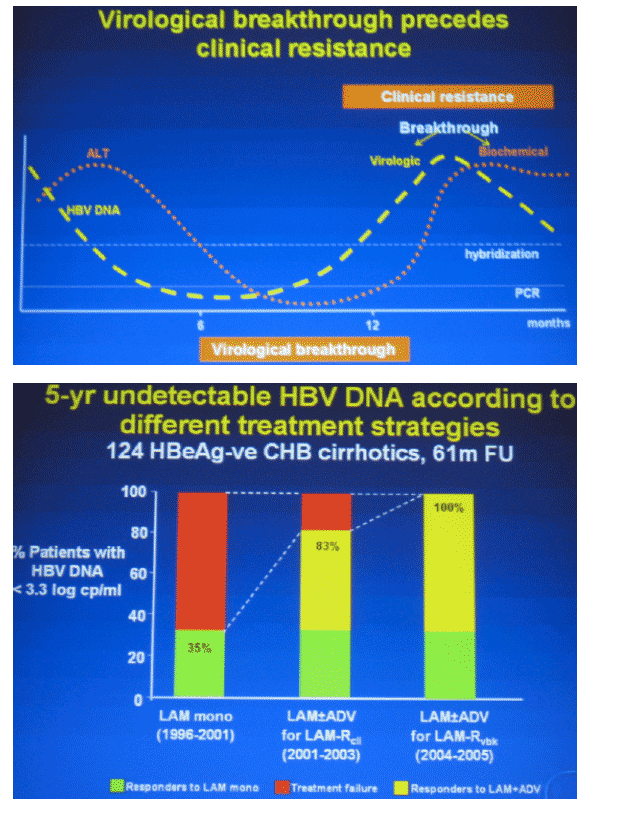
BACKGROUND AND AIMS
"Add on" adefovir dipivoxil (ADV) is an effective treatment for patients developing lamivudine-resistance (LAM-R).
The long-term risk of developing genotypic resistance to ADV and the impact of ADV+LAM combination on progression of cirrhosis, are unknown
We assessed the 3-yr virological, biochemical and clinical efficacy of ADV+LAM combination in a large cohort of LAM-R patients
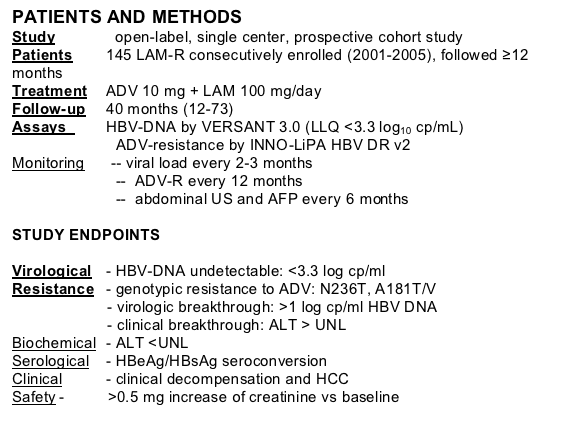
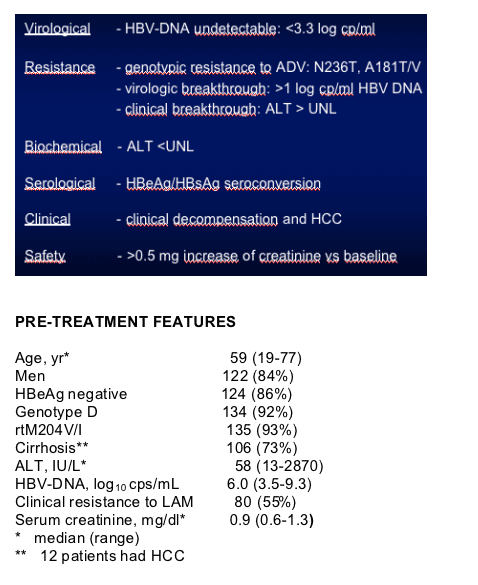
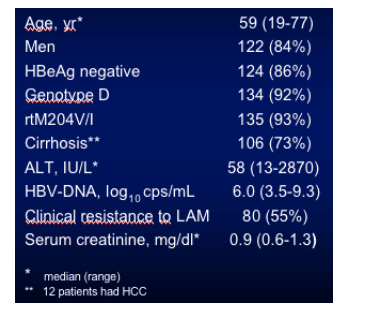
VIROLOGICAL RESPONSE
Serum HBV DNA became undetectable in 99/145 (68%), 89/112 (80%), 68/78 (87%), and 33/39 (85%) of patients after 1, 2, 3, and 4 years, respectively. None of the patients who achieved undetectable HBV DNA or maintained persistently detectable viremia, showed >1 log rebound of HBV DNA compared to on-treatment nadir.
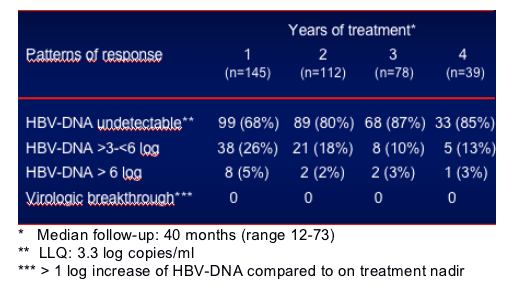
Genotypic resistance to ADV
Genotypic resistance with rtN236T was not identified in any patient
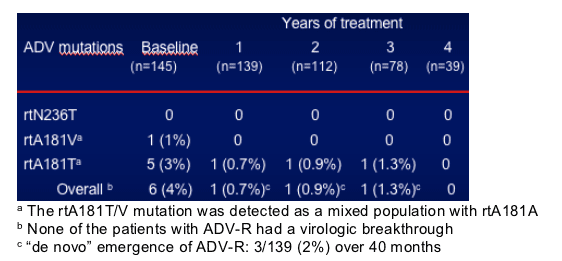
HBV-DNA levels and ADV resistance in the 6 LAM-R patients with rtA181T/V at baseline (before ADV)
Despite baseline resistance mutations including A181A/T/V, 5/6 patients achieved < LLQ 3.3 log10 cp/ml. The one patient who did not reach undetectable had a very high baseline viral load so Lamertico said that may be why or followup may be too short.
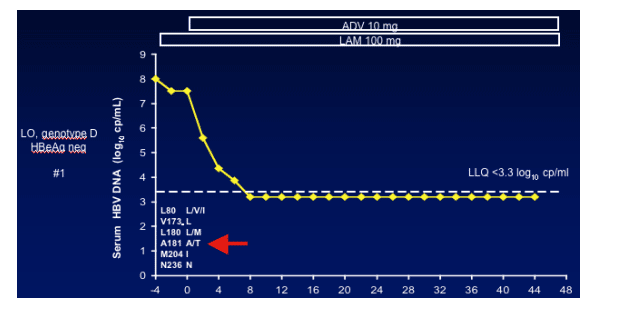
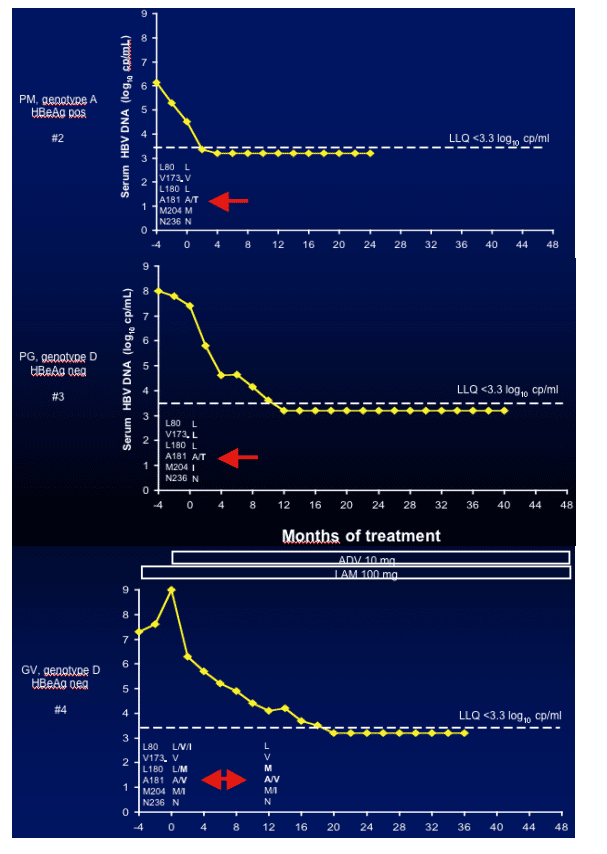

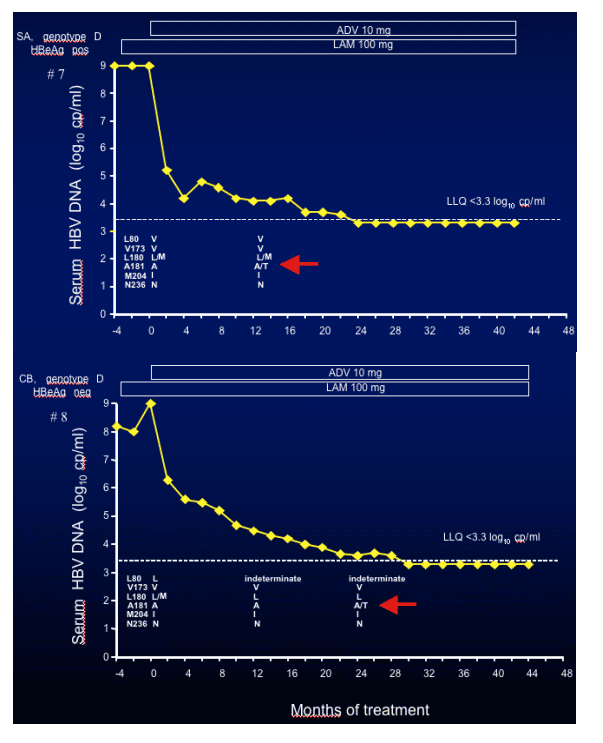
Biochemical and serological response
84% achieved ALT normalization. HbeAg loss occurred for 38%, HBeAg seroconversion for 24%, HbsAg loss for 1.4% (2/145), and HbsAg seroconversion for 0.7% (1/145).
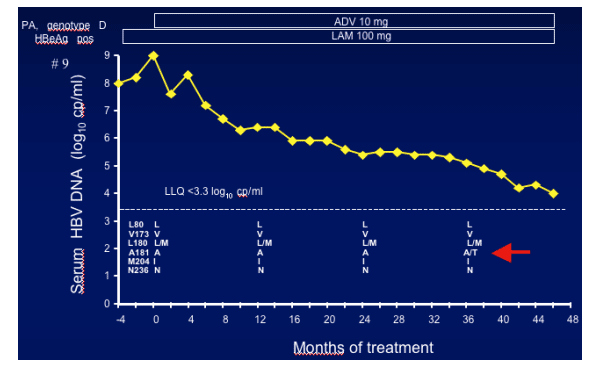
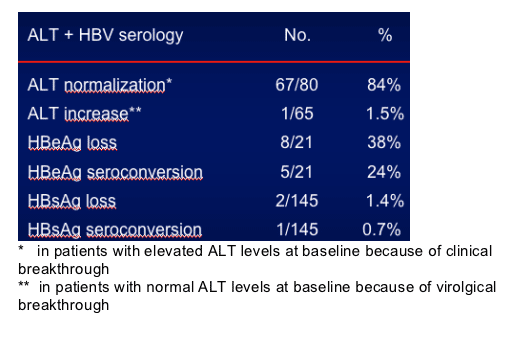
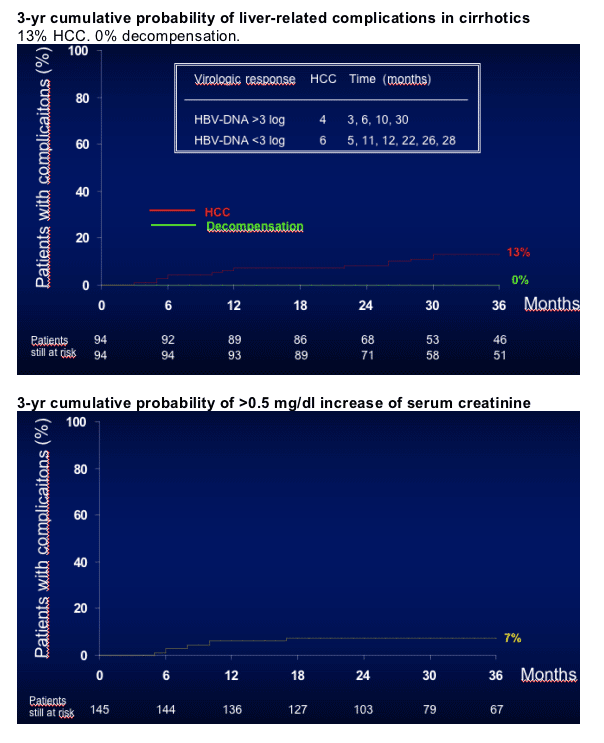
|
| |
|
 |
 |
|
|